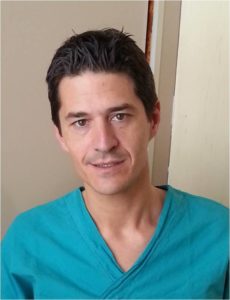
Roberto Iezzi provides an overview of ablative therapies, and what interventional radiologists can expect from ablation procedures in the near future. Amongst the emerging technologies discussed are molecular-targeted agents, improved imaging-guided modalities, and the combining immunotherapy with ablative strategies.
In the last years, local ablative therapies have increased in the clinical practice, playing an important role not only as a curative option in the treatment of localised primary and secondary cancers, but also as an alternative when palliation is desired, local control is needed, or surgical resection is not feasible, principally due to the longer survival of patients with metastatic disease.
In the above clinical scenario, thermal ablation technology has evolved rapidly with substantial technical and procedural improvements that can expand clinical indications, improve clinical outcomes and better safety profiles.
The future perspectives of ablation are mainly based on the attempt to overcome ablation intrinsic limitations, mainly represented by the higher rate of local tumour progression (LTP) compared to surgical resection that can occur due to an incomplete ablation at the periphery of the tumour, and the absence of an ideal tool to precisely guide and monitor the ablative procedures. In detail, the creation of a larger ablation volume in a reasonable time frame without technical complexity is necessary to achieve a complete ablation, significantly reducing the rate of local tumour progression. It is well known that this aim can be obtained using multiple electrodes to switch from monopolar to bipolar/multipolar modes, or by using different energy sources, including microwave, laser, high intensity-focused ultrasound (HIFU) and cryoablation. However, in the last few years the concept of combined treatment has strongly emerged; this can be referred to as multimodality, such as in combined ablation and chemoembolization, and also to intermodality, a combination of ablative procedures, percutaneously or intra-arterially driven, with three-dimensional conformal radiotherapy (3DCRT). In detail, the development of three-dimensional conformal radiotherapy (3DCRT) has enabled high dose radiation to be directed to a tumour with a frank sparing of the non-tumour surrounding liver parenchyma without restriction due to tumour topography and size, presence of peri-tumourous satellite nodules, or associated segmental portal vein thrombosis.
Furthermore, the recent development of molecular-targeted agents in the treatment for hepatocellular carcinoma (HCC) has also prompted synergies between locoregional tumour ablation and systemic chemotherapy.
Other emerging technologies are represented by imaging-guiding modalities and assistive techniques for percutaneous treatment. In particular, recent technical advances of imaging fusion have enabled the overlay or side-by-side display of real-time ultrasound images combined with the established fusion of CT/MRI-acquired images, but also PET (Positron Emission Tomography) during an interventional procedure. Like fusion imaging, contrast-enhanced ultrasound increases radiofrequency ablation performance in terms of localisation and targeting of a tumour. Applying these techniques to tumour ablation enhances the identification of target lesions and the feasibility of the intervention.
Finally, there is a growing interest in combining immunotherapy with ablative strategies, but little data are available to guide if and how these modalities should be combined.
What is clear is that thermal ablation cannot be considered solely as a locoregional therapy. The resultant inflammatory response, though at present limited and unpredictable, paves the way for an expanded role of thermal ablation as a stimulant to the immune system. Ablation, however, is a two-edged sword, and causes of and solutions to its oncogenic effects need to be investigated. What we strongly need is to optimise the timing of immunotherapy and thermal ablation; that is crucial for the creation of a curative therapy. Recent studies seem to demonstrate that a primed ablation protocol can enhance treatment response with a high tumour burden. Also, as a result of mechanical and immunologic changes in the tumour microenvironment following local ablation, it seems to be a window of opportunity for employing immunotherapy, after which the ablation may actually limit the efficacy of immunotherapy. Sequential immunotherapeutic strategies after ablative therapies seem also to show a great potential for the prevention of post-ablation tumour recurrence and for generating durable and powerful antitumor immunity to achieve optimal tumour control. The prospect of manipulating the immune system toward the rejection of established cancers as part of the standard of care for patients is becoming closer to reality, even if more data are still needed to further verify its efficacy.
All these technical and procedural aspects will be discussed in the fourth edition of MIOLive 2019 (Mediterranean Interventional Oncology;28–29 January 2019, Rome, Italy). The meeting will be a forum for discussion for all those who are interested in interventional oncology, as well as locoregional treatments. It will be a practical interactive meeting based on live cases integrated by short presentations and lectures where professionals from various Mediterranean countries can share opinions, experiences, research projects and knowledge, under the guidance of several international experts. It is the best place for obtaining networking opportunities, listening to experts, and learning and sharing best practices.
Roberto Iezzi is an interventional radiologist at Policlinico A Gemelli, Rome, Italy.













